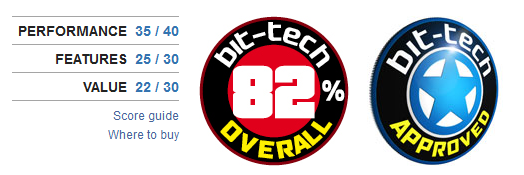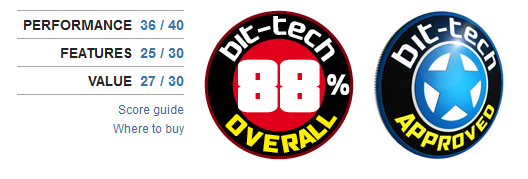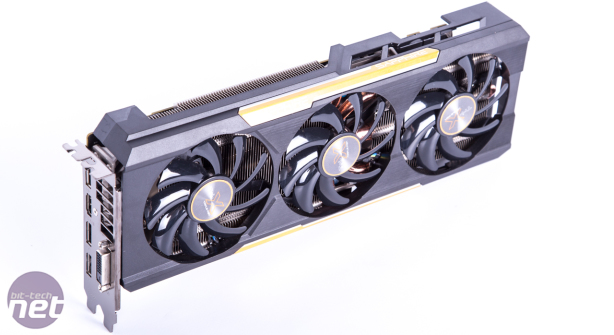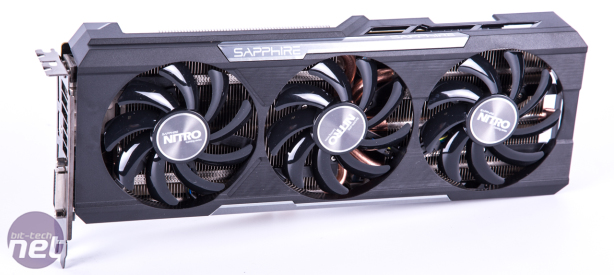AMD has dealt its graphics card partners a tricky hand with the R9 300-series. GPU vendors like Sapphire Technology have been tasked with creating interest and prolonging the life of AMD's ageing GCN products in the mainstream graphics card market. In itself that isn't a bad thing, because the R9 390X, R9 390 and R9 380 are high-performance GPUs with a proven track record, but in the face of highly-efficient competition from Nvidia the situation becomes more challenging. Only at the top-end are new Fiji-based GPUs able to provide some innovation and reprieve against Maxwell which is, arguably, a generation ahead in terms of power efficiency.
Yet Sapphire has room for improvement, because it should be more aggressive with its factory clock speeds and this applies to all three graphics cards that have been tested today. There is still untapped performance potential across the R9 390X, R9 390 and R9 380 that Sapphire doesn't exploit where other vendors do. Sapphire also misses a trick by not providing backplates on the beefier R9 390X and R9 390. These may add extra cost to the final product but other vendors are equipping them at the same price point. Sapphire could, however, make this omission easier to digest by offering prospective R9 390(X) buyers some higher-end variations based on its Vapor-X or Toxic product lines that include backplates.
The star of the show, in our minds at least, is the Sapphire R9 390 Nitro 8GB which comes to market at £270 but delivers performance comparable with the more expensive R9 390X and GTX 980. The R9 390 is positioned generally as a competitor to the GTX 970 which it is capable of out-performing, albeit with significantly more power consumption and heat. However, Sapphire believes power consumption is of negligible concern to PC gamers as, crucially, the R9 390 Nitro still delivers an excellent gaming experience.


Click to enlarge
Sapphire has made wise decisions with its R9 390X Tri-X, R9 390 Nitro and R9 380 Nitro graphics cards. All three bear the hallmarks of a competitive graphics card. Fundamentally, the trio start with refined and effective cooling solutions that are able to maintain low temperatures and quiet acoustic performance as well as functional traits like a hybrid fan mode and dual-slot form factor which facilitates the possibility of multi-GPU configurations. These characteristics are all the more impressive when considering the high TDPs being handled by the Nitro and Tri-X cooling solutions at hand.Yet Sapphire has room for improvement, because it should be more aggressive with its factory clock speeds and this applies to all three graphics cards that have been tested today. There is still untapped performance potential across the R9 390X, R9 390 and R9 380 that Sapphire doesn't exploit where other vendors do. Sapphire also misses a trick by not providing backplates on the beefier R9 390X and R9 390. These may add extra cost to the final product but other vendors are equipping them at the same price point. Sapphire could, however, make this omission easier to digest by offering prospective R9 390(X) buyers some higher-end variations based on its Vapor-X or Toxic product lines that include backplates.
Click to enlarge
The Sapphire R9 390X Tri-X 8GB graphics card is an interesting alternative to Nvidia's GTX 980 that offers similar performance at 1440p and 4K resolutions for around £50 less. Prospective buyers face the marketing lure of 8GB of VRAM which is currently of limited use given that this year's hottest games are yet to regularly exceed the 4GB limit, even at 4K. In instances where 4GB is exceeded the GPU is more likely to be the limiting factor on performance than a lack of video memory, but scaling into multi-GPU configurations can get around this. Sapphire does, however, make a convincing case for the R9 390X since its Tri-X model is more refined and less bulky than some of the competition.The star of the show, in our minds at least, is the Sapphire R9 390 Nitro 8GB which comes to market at £270 but delivers performance comparable with the more expensive R9 390X and GTX 980. The R9 390 is positioned generally as a competitor to the GTX 970 which it is capable of out-performing, albeit with significantly more power consumption and heat. However, Sapphire believes power consumption is of negligible concern to PC gamers as, crucially, the R9 390 Nitro still delivers an excellent gaming experience.
Click to enlarge
Sapphire's R9 380 Nitro is designed to cover the needs of the mainstream gamer making use of a 1080p panel. However, the Sapphire R9 380 Nitro 4GB is strangely placed, as the 4GB of video memory holds a price premium over 2GB equivalents to the tune of around £20, or £180 compared to £160. That premium could make it a tougher to lure in mainstream gamers since Sapphire itself recommends the R9 380 Nitro for "1080P gaming at high detail levels in most games", yet 4GB of VRAM is arguably overkill for 1080p. A 2GB variation of the R9 380 Nitro would likely go down a storm and give it a much-needed value boost against Nvidia's GTX 960 which starts at £150.Sapphire R9 390X Tri-X 8GB Score

Sapphire R9 390 Nitro 8GB Score

Sapphire R9 380 Nitro 4GB Score

-
Performance34 / 40
-
Features25 / 30
-
Value23 / 30


MSI MPG Velox 100R Chassis Review
October 14 2021 | 15:04












Want to comment? Please log in.